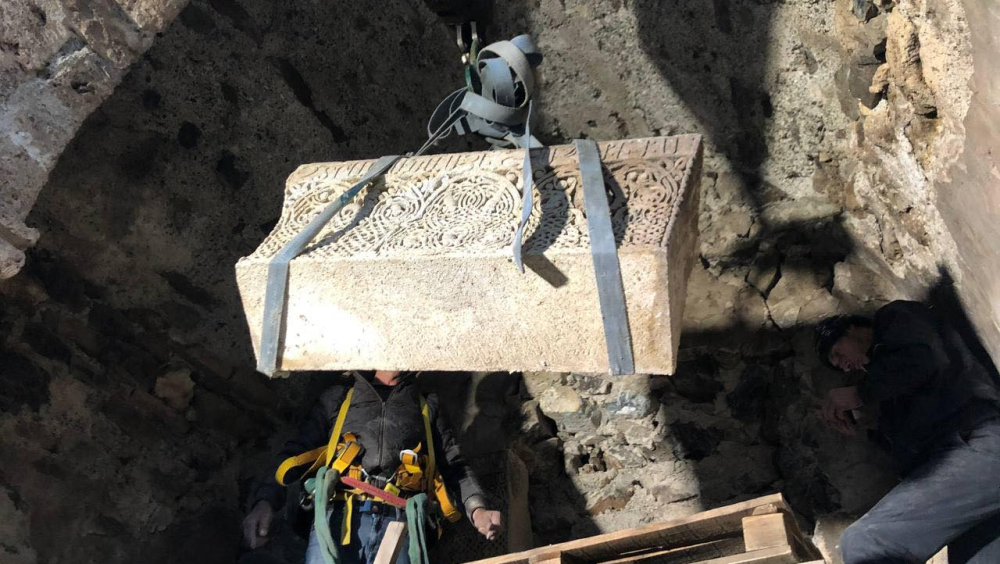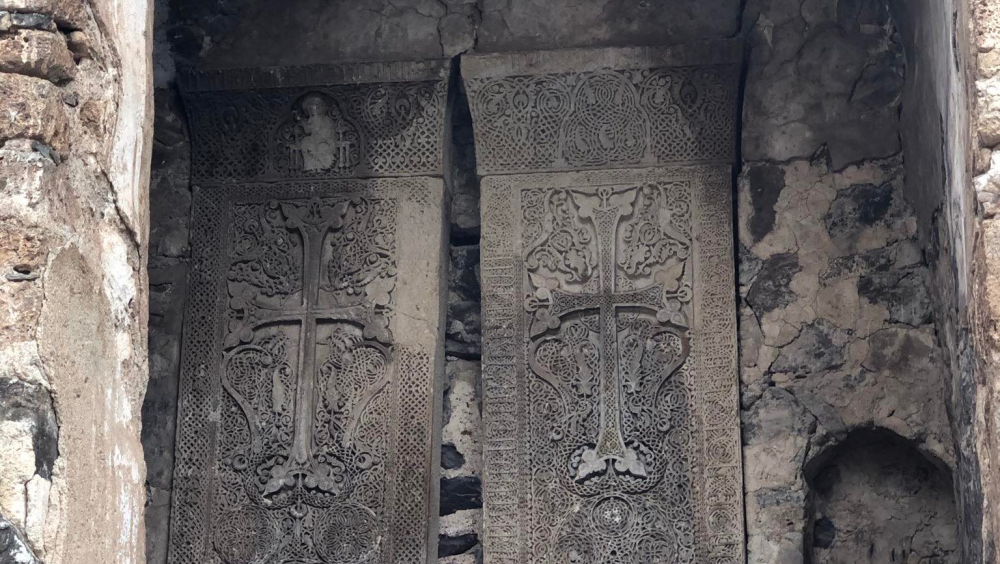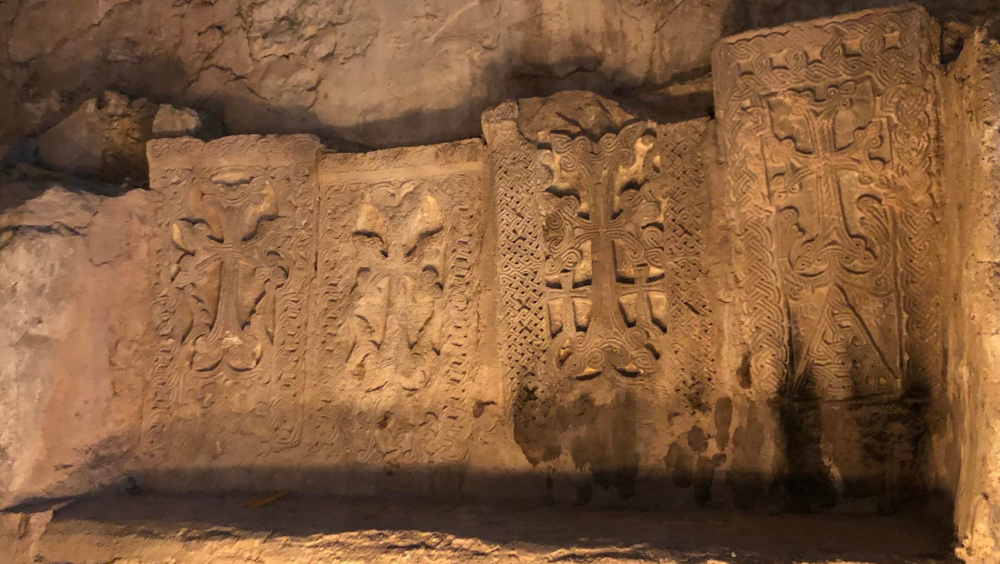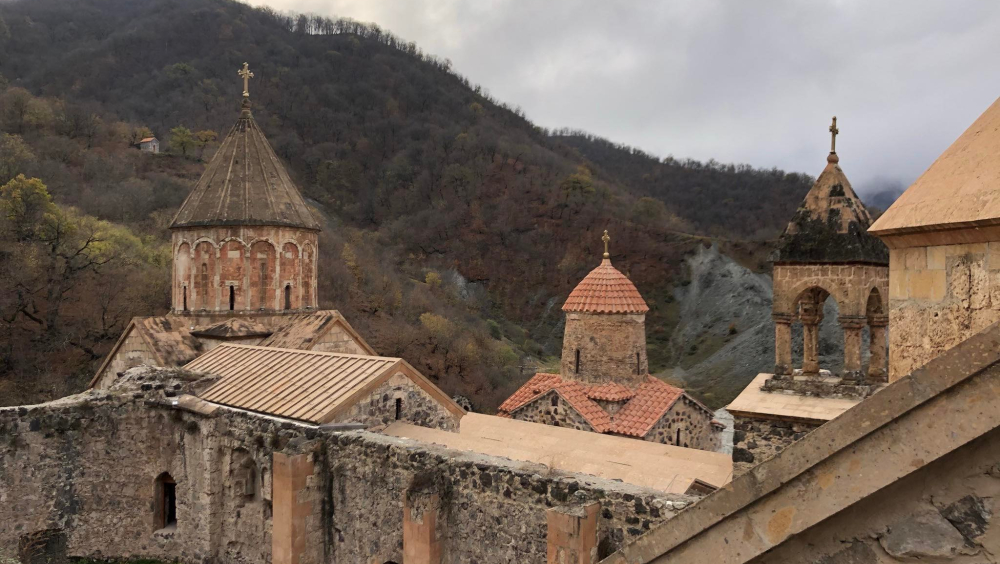Evacuation Literacy for Endangered Armenian Cultural Heritage
Overview
‘Evacuation Literacy for Endangered Armenian Cultural Heritage’ aims to prepare librarians, museum workers and other information professionals in Armenia for the evacuation of cultural heritage materials in times of danger. As all Armenians observed during the tragic 2020 Artsakh War, with the devastating loss of territory also came the loss of centuries-old manuscripts, artifacts, and other cultural heritage materials, some of which could have been prevented from destruction if information professionals were trained and had modern-day knowledge of appropriate emergency procedures.
In recent years, with the rise of xenophobia and the displacement of so many people due to war and natural disasters, many European countries are experiencing a similar crisis in which cultural diversity is being threatened by both internal and external factors. Armenia, sitting on the edge of the European world, hopes to serve as an example, especially among those countries of similar economic background, of how to sustain the history and culture of an ancient people through modern-day preservation techniques. After all, these materials are not simply objects, but rather contain generations of stories, wisdom, and practices that can help us create a better, more inclusive, and more diverse Europe moving forward.
On November 14th, 2020, a caravan of cars filled with families, friends, journalists, historians, cultural workers and others, streamed into Dadivank Monastery in the Republic of Artsakh. The roads were packed, and they had all come to say goodbye. In just a few days, the monastery, and the territory it had sat on since the 9th century, would be handed over as part of a peace treaty that effectively ended a deadly war that had been ongoing for the previous five weeks. Armenia and its breakaway state of Artsakh had lost.
Some of the visitors walked around collecting artifacts. Others felt that they couldn’t bear to separate the materials from their ancestral home. Others simply sat in silence and looked on. Everyone chose their own way to grieve. Apart from the many lives that were lost during the 2020 Artsakh War, Armenians saw much of their cultural heritage materials fall out of their hands and into destruction, from manuscripts to paintings to sculptures and pottery, to heritage sites, and more. Nine libraries, museums and other cultural centers located in Artsakh now sit in ceded territory, their contents lost. Their guardians did not know what to do, or how to save the materials they had been entrusted with keeping safe.
Many photographs do not exist from this time, either because those who had been tasked with the work of saving materials did so in the dark of night, or because the chaos of the moment required everything to be done as quickly as possible, before it was too late and the land was no longer theirs.
Armenians around the world looked on in anguish. They had heard stories from their parents and grandparents about the 1915 Armenian Genocide, about the diaries, clothes, hand-woven rugs, photographs, silverware and other family items left behind. Some of those items now sit in the Armenian Genocide Museum in Yerevan. Those same parents and grandparents had also told stories about the ancient kings and queens of the Kingdom of Armenia and their intricate stone carvings, which sit in the History Museum, or the early 5th century manuscripts on display at the Matenadaran.
To many, these items only hold a place in the imagination, or as photographs in an online exhibit. But for those working every day in Armenia’s libraries and museums, the 2020 Artsakh War revealed something they all already knew and feared - that as information professionals, they were completely unprepared to evacuate and save the nation’s cultural heritage materials from both internal and external threats. The loss that their parents and grandparents had experienced would only continue.
Regardless, following the war a formal needs assessment was conducted, which confirmed that Armenia’s cultural centers were far from prepared for future threats. As a still-developing former Soviet republic, whatever plans existed were outdated by decades, and written with pen and paper. The modern infrastructure and knowledge necessary for the proper evacuation of centuries-old materials was non-existent. Libraries and museum workers lacked formal training. Those who had graduated from information science programs were taught using woefully outdated curriculum.
‘Evacuation Literacy for Endangered Armenian Cultural Heritage’ seeks to rectify this problem by laying the foundation for evacuation literacy for Armenia’s libraries and museums. The National Library of Armenia (NLA), in collaboration with Arkanel LLC, a fine art packing and shipping company, will design and implement a comprehensive series of workshops for librarians and museum directors throughout Armenia that will cover both the theoretical and practical elements of modern-day evacuation procedures for cultural heritage materials. This will range from preventative planning such as how to prioritize collections, assign tasks to specific staff members, plan escape routes, and more, to more practical techniques such as handling and packing delicate items.
European Dimension
This project’s activities are deeply connected to the practice of preserving and sharing heritage within Europe. As an ancient culture whose once expansive territory has shrunken over the course of centuries as a result of being conquered by much bigger empires, Armenians know that the struggles of one people are the struggles of all people. Nestled on the outskirts of Europe, juggling Western and Eastern lifestyles, Armenian cultural heritage has something unique to offer, and can contribute greatly to the diversity of voices in Europe. In fact, as a country with one of the biggest diasporas in the world, Armenia’s history can be seen all over Europe, from the first Armenian printed book (“Friday book,” Venice, 1512) to the first map (“Large World Map,” Amsterdam, 1695).
In this way, saving the cultural heritage materials of Armenia is also saving the cultural heritage of so many places throughout Europe in which Armenians have formed communities and places of refuge. As such, the project upholds the European Heritage Days’ values of having a pan-European context, upholding human rights, and building democracy. Armenia, as a former Soviet republic and now developing democracy, is moving more toward integrating European standards and practices, and we want to share that development with the rest of Europe, in particular our fellow former Soviet republics who may be experiencing the same issues of lack of resources and knowledge. For information professionals in Armenia, this means using modern-day evacuation and preservation practices to tell our story and share our narrative as a small group of people with a big history.



